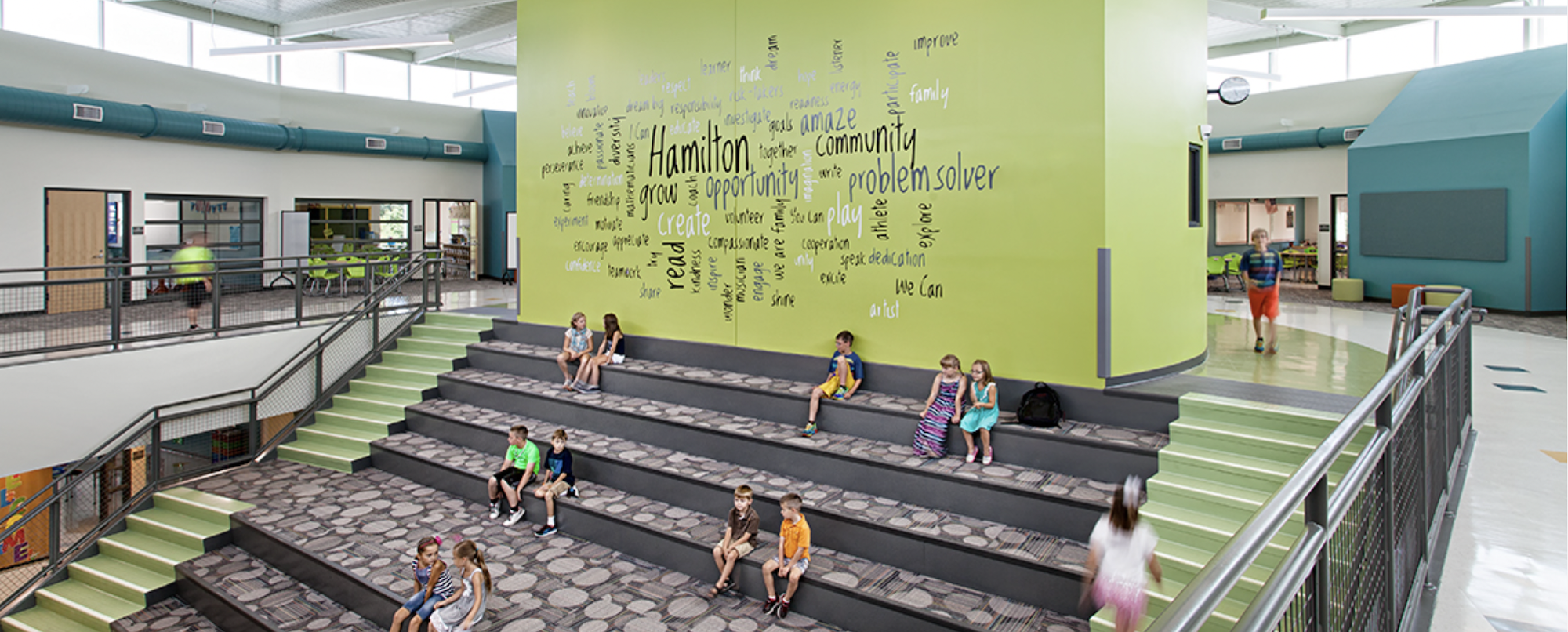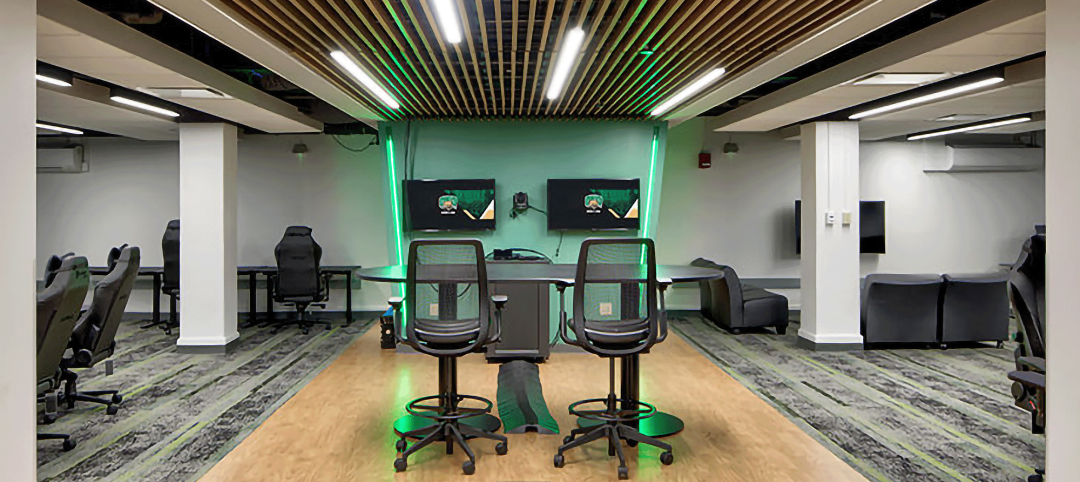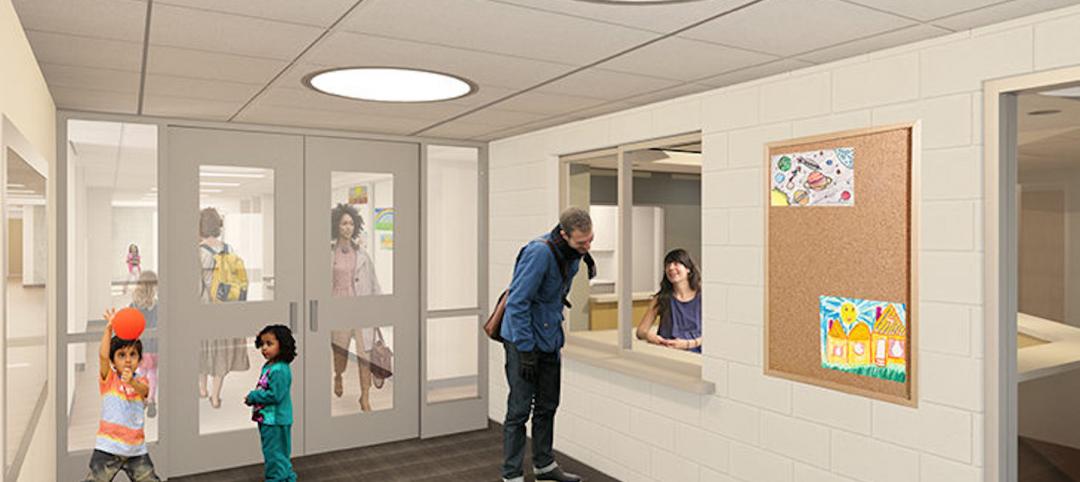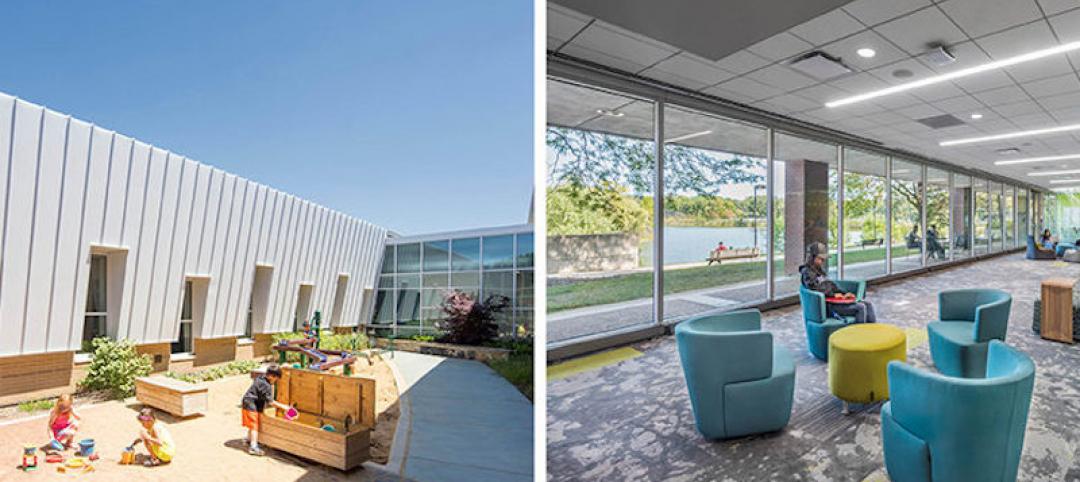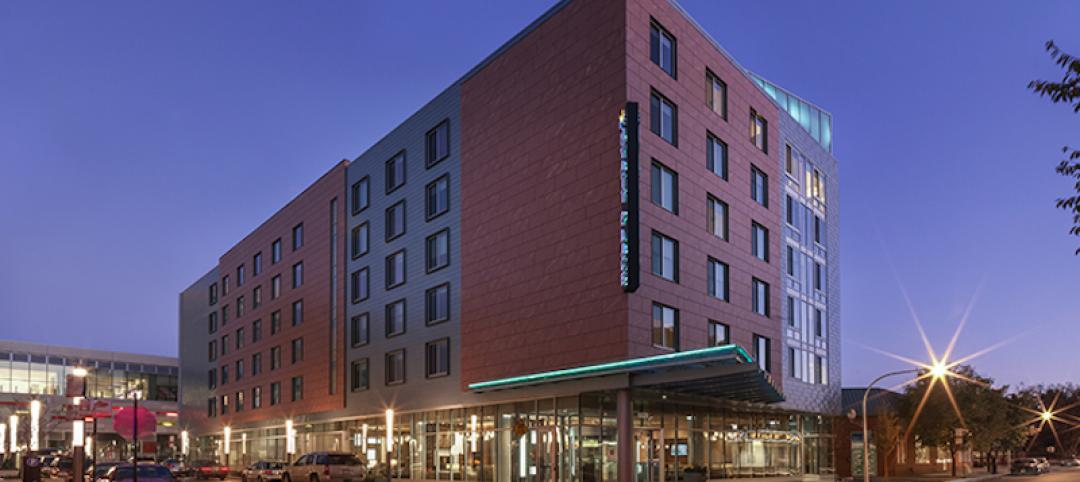School leaders, architects, and interior designers face a challenge when it comes to educational settings: how can they create a facility that improves the lives of all students, whether they are neurotypical, diagnosed with neurological disorders like ADHD or autism, or have physical disabilities?
It starts with a unified approach including not just principals, teachers, and students but also parents and other community members. Dennis Paben, senior architect at Legat Architects, said, “Communication needs to be as transparent as possible so that nothing gets lost in translation.”
Once that communication is established, school leaders and architects can explore a variety of design options to make schools more welcoming to all student types. Following are 10 ways to create therapeutic school environments that benefit students’ bodies and minds.
1. Harness the Power of Color and Pattern
Color and pattern play a critical role in therapeutic learning environments. On the surface, these elements can create striking educational settings. But if we go deeper, there is a psychology behind color and pattern. The blending of pattern and color, rhythm and balance, and proportion and scale determine how calm or energetic an environment is.
Not knowing where to go can be stressful, especially for children. Color can also ease wayfinding. “Go to the green wall, then walk through the yellow door.”
Educators often ask about ideal colors and patterns for creating therapeutic settings.

“When in doubt, go with nature-based decisions,” said Sylvia Kowalk, director of interior design at Legat. “Colors and patterns based on nature calm students and therefore make them more receptive to learning.”
Kowalk suggests calming greens and blues along with organic patterns to put students at ease and therefore encourage concentration and attention. She warns, however, that learning settings that are too green or too blue can disrupt student performance. It’s all about finding a balance.
Much of color/pattern selection depends on how much energy schools want a space to have. A natural pattern with a single color, for instance, becomes a focal point. Add more colors and the energy grows.
All this is to say that no color/pattern combination is a panacea — it all depends on the goal of the space.
2. Encourage Movement
The days of remaining sitting in the same space for hours on end are over. Children (and adults) need to move. When bodies move, blood flow to the brain increases. It makes us feel good and boosts our thinking.
In many schools, movement-oriented spaces can only be found outside. With the right touches, however, interior spaces can encourage movement, which is especially important in locations where winters force students to spend most of their time indoors.
Natural light, views, and (once again) color and pattern can create visual movement. Students feel and respond to the energy of the vibrant space. Additionally, furniture can be reconfigured to create more spaces that encourage movement.
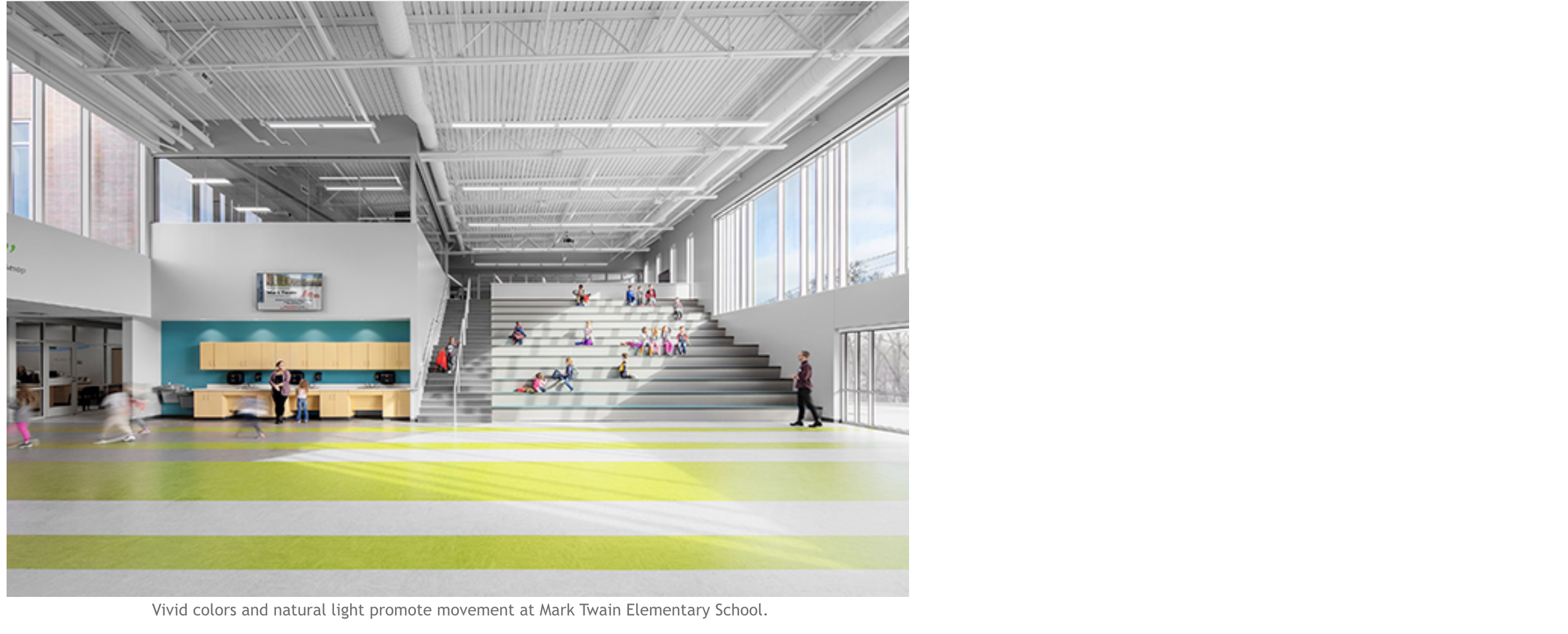
3. Tighten the Focus on Dining
Cafeteria spaces can also support students’ physical and mental health. It starts with the placement of food offerings: make sure the healthiest options are on display so students see them first.
If food takes the lead in student dining spaces, then furniture plays a strong supporting role. Kowalk recommends at least 25% of seating in these spaces should be standing.
Studies have shown people will move around more and eat less if they are standing. Moreover, standing encourages social gatherings and decreases pressure to stay — friends can simply stop by and leave any time they wish.
4. Be Mindful of Lighting (Natural and Artificial)
Though they are well-known among many educators, the benefits of natural light bear repeating: daylight not only reduces energy costs and energizes a space but also escalates the mood and performance of building occupants.
When it comes to daylight, Dennis Paben warns schools should be careful not to bring in too much of a good thing. Giant glass walls — airports are notorious for these — can distract occupants when the sun pounds into the building … especially if that wall faces east or west. There are many ways to bring natural light into a space without making it overwhelming. Examples range from light wells and light shelves to clerestories and reflective blinds.
Artificial lighting requires just as much thought as daylighting. The type of space (e.g., classroom, cafeteria, gym, theater) and how the school intends to use it will impact the type of lighting, whether it be uplighting, downlighting, indirect lighting, direct lighting, or spotlighting.
Considering that more space means more money, flexible lighting can help reduce construction costs. Take a consultation space in an administrative wing. If a student having a bad day needs to talk with a teacher or specialist, lighting within the space can be tweaked to create a quiet, calm setting. That same space can host a small student awards ceremony with brighter lights and maybe even music.
For a deeper look at how a building’s orientation and massing impact natural light, check out Loren Johnson’s post on planning strategies for energy-efficient buildings.
5. Keep Acoustics Under Control
Sound is an often-overlooked reality of every space within a school. The question is, how prevalent should that sound be?
“Acoustics create an opportunity for each space to present itself in a unique way,” said Paben. “We typically think of light, color, and texture when spaces are designed, but how do we want them to sound?”
Space design and material selection impact sound. They determine how comfortable, exciting, or distracting a space will be.
Corridor spaces with tall windows can be favorite places for students to congregate. That glass, however, can cause sound to bounce around and therefore be a distraction. Fortunately, designers can use a variety of methods to dampen the sound. See an example at Glenbard West High School.
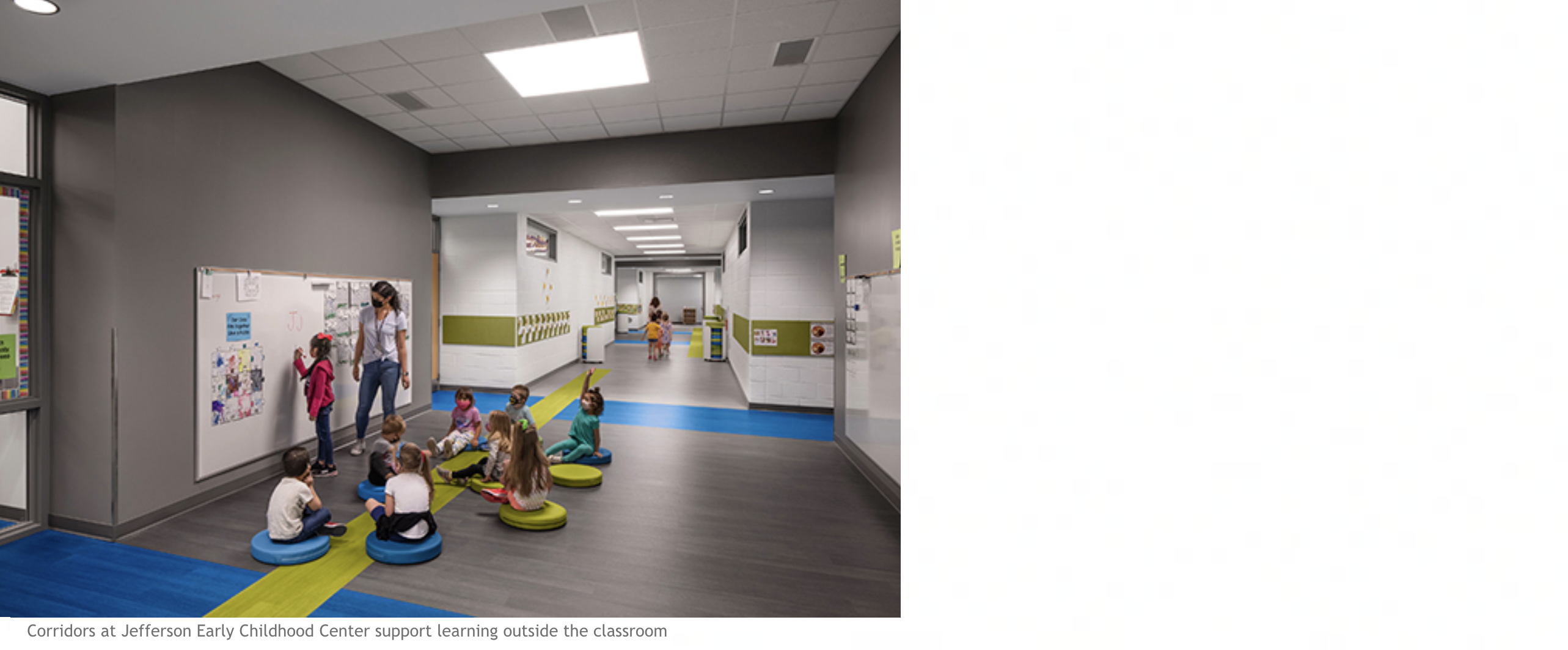
6. Capitalize on Corridors
Corridors are no longer solely a means of traveling from one classroom to the next; they are spaces to expand teaching lessons, support student socialization, and encourage spontaneous interactions between students and faculty. They also present an opportunity to put learning on display and therefore get students excited about programs.
While some have expressed security concerns about the use of glass in corridors, Paben and Randall maintain glass can create transparency and safety within a building’s circulation.
“Glass allows the people who are protecting the students to see more,” said Paben. “An initial thought might be, ‘We need to hide’ but just as important is, ‘We need to see as much as we can.’”
Randall added that security professionals she’s worked with encourage transparency so leaders can see down circulation areas and walk corridors to get a thumbs-up from teachers as they assess the situation.
7. Embrace Multipurpose Spaces
Multipurpose spaces are highly beneficial for budget-strapped school districts. Examples range from small spaces where teachers can meet with each other, students, or parents to large spaces like gymnatoriums.
Laraway School’s cafeteria/commons quickly transforms to a space for smaller performances. The stage’s movable acoustic wall can be opened to the gymnasium on the other side.
A renovation converted a dark, underused library in Newark High School into a multipurpose Innovation Center complete with a camera studio, robotics lab, and a variety of equipment supporting STEM careers. It’s now a popular activity hub for students to work on projects or just hang out.
The focus on multipurpose spaces extends to athletic programs. School designers are uniting spaces so coaches and athletes can learn from each other. At the North Scott High School Lancer Athletic Building, for instance, a sprinting track goes around the weight room and leads into the gymnasium.
8. Support Teacher Collaboration
The new generation of teachers entering the workforce comes from collaborative backgrounds. The idea of a teacher holding a singular position of leadership (in their classroom domain) no longer holds water. Today’s teachers thrive in an environment where they can work together.
Schools have discovered the many benefits of teachers working together to enhance lessons and collectively address challenges. The design of spaces can either support or encumber this reality. Unfortunately, many older school facilities promote silos that discourage communication.
School leaders should challenge architects and teachers to create spaces where teachers can have a conversation or simply take a moment to collect themselves.
9. Optimize Spaces for Special Needs Students
Many schools place students with special needs in standard classrooms. Students with cognitive/physical disabilities and behavior/emotional diversities, however, get the most from their educational experience when spaces are designed, furnished, and equipped to meet their unique needs.
Examples of specific spaces that cater to special education needs include sensory classrooms (for autistic students), classroom or under-stair nooks where students can collect themselves, and outdoor spaces that encourage exploration of nature.
Two-thirds of students at Jefferson Early Childhood Center have special needs. The design responds with outdoor areas and specialized equipment, as well as expanded corridor space, integrated therapy areas between classrooms, and a sensory motor room.
The A.E.R.O. Therapeutic Center now under construction in Burbank, Illinois will become one of the largest special educational facilities in the Midwest. Each of the spaces, from the entry lobby and cafeteria to corridors and classrooms, is designed to meet A.E.R.O. Special Education Cooperative’s goal of providing innovative services for students with disabilities including physical, mental, and emotional needs.
10. Make the Most of Existing Space
Many educational providers jump to the conclusion that the preceding recommendations can only be achieved with new construction. No need for concern: these tips can apply to everything from brand-new schools to the rejuvenation of a single space.
Renovations often prove more cost effective for schools with major budgetary constraints. Examples range from adding windows to bring in more daylight to converting underused areas into multipurpose spaces. Sometimes simply changing colors or lighting can have a notable impact on student attitude and performance.
And if schools start small, big things can happen. One summer, LaSalle-Peru High School (La Salle, Illinois) created one “model classroom” by adding new furniture, carpeting, and technologies. A survey revealed student engagement went up more than 50% after the changes. That small project propelled the passage of a $38 million referendum for schoolwide renovations.
Contact us to learn more about therapeutic learning environments or comment below to share your thoughts on this post.
More from Author
Legat Architects | Feb 9, 2024
Disability and architecture: ADA and universal design at college campuses
To help people with disabilities feel part of the campus community, higher education institutions and architects must strive to create settings that not only adhere to but also exceed ADA guidelines.
Legat Architects | Jun 5, 2023
How to achieve cost-effective kindergarten classrooms
Educational architect Robin Randall shares realistic advice about the challenges of adding developmentally appropriate, play-based kindergarten classrooms while respecting budget limitations.
Legat Architects | Dec 19, 2022
Ohio University’s OHIO Esports Arena redefines video gaming
If a college student enjoys film studies, there is probably a place on campus where they can join other film buffs. But where can students who like video games go?
Legat Architects | Jun 20, 2022
An architectural view of school safety and security
With threats ranging from severe weather to active shooters, school leaders, designers, and security consultants face many challenges in creating safe environments that allow children to thrive.
Legat Architects | Apr 6, 2021
Architecture and daylight: Planning strategies for energy-efficient buildings
Energy efficient, healthy, and affordable: the predictable nature of seasonal daylight geometry makes it one of the first topics to be considered when undergoing any design project.
Legat Architects | Jul 28, 2017
Achieve hospitality architecture that impresses – Multigenerational appeal, local connections
Did guests get the experience that they paid for? This question has long haunted hotel operators.
Legat Architects | May 16, 2017
Architecture that helps children fall in love with the environment
The coming decades present a major ecological challenge... so let’s encourage the next generation to do something about it!
Legat Architects | Mar 30, 2017
Train station architectural design fundamentals: Accessibility
If safety is the number one priority for train stations, then accessibility comes in at a close second.

